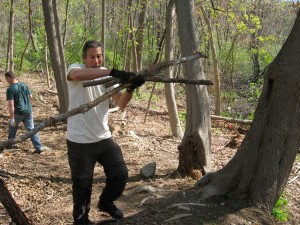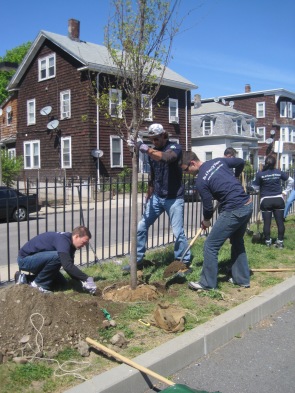Now nearly halfway through August, some folks are already preparing for fall, with back to school specials, fall beers in stores and planning last minute vacations. TSL knows that there is plenty of warm weather on the way, which is why we reached out the members of our Environmental Sustainability Task Force to see if they had any tips for a more sustainable summer. Thankfully for TSL, Carolyn Kaplan (Nixon Peabody), Michelle O’Brien (Mackie Shea O’Brien) and Pamela Harvey (Mass DEP) came through with some great suggestions on staying green while still beating the heat.
1) Put Pedal to the Metal. Everyone knows that riding a bike or taking the T to work is the way to go. That said, in the sweltering head or in a time crunch (no offense, MBTA) it might not be for everyone. That said, why not bike rather than drive to a friends for a nice weekend lunch? Want to go to the beach? TSL knows from experience that the Blue Line takes you right to Revere (and Kelly’s Roast Beef) for a fun day out with the family. And don’t scoff, with brand new sand and a renewed emphasis on keeping the beach clean, you might just mistake Revere for a quasi-tropical paradise.
2) Skip the Supers. Farmers Markets are all the rage of late, and for good reason. Who can resist op notch produce coming from countless farms across Massachusetts? The sustainable benefits go without saying, but naturally, we are going to say it anyways. Farmers markets:
- They help reduce food miles, thus vehicle pollution and fossil fuel use.
- Help to reduce packaging.
- Help to improve diet and nutrition by providing access to fresh food.
- Cut out the middleman allowing increased financial returns through direct selling and price control
- Stimulate local economic development by increasing employment and encouraging consumers to support local business.
So whether you are stopping by a market on in Boston on your way home, or making a weekend trip (bike ride to the farmers market, anyone), support local farms and pick up some of the fantastic produce they have to offer. Here’s a list of Massachusetts farmers markets and their hours of operation.
3) Cool it with the AC. Pamela Harvey recommends turning off the AC and having a relaxing dinner on your deck or patio. Worried about coming home to a sweltering house? If you have central air – use it to your advantage. Michelle O’Brien recommends installing (or using) a timer so you can come home to a cool home without blasting the AC all day. If your unit has an energy saver mode, always use it. It’s the little things that count.
4) Lay off the bottle. Summer is hot, and water is necessity. That said, try and stay away from bottled water whenever possible, or as Pamela Harvey says “enjoy the Quabbin on Ice.” Use a Brita if you are a stickler for filtered water, and if you need water on the go, buy a water bottle (a green one if possible). Vapur.com tells us that 17 million barrels of oil are used each year to make water bottles. Whoa…let’s put a stop to that.
Think we missed some tips? Want to hear more? Sound off below!













